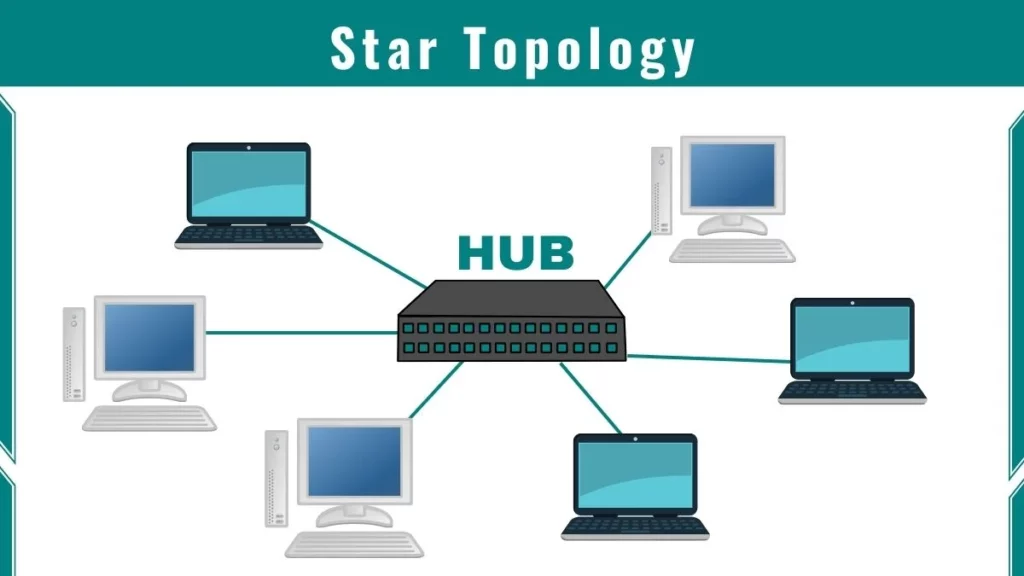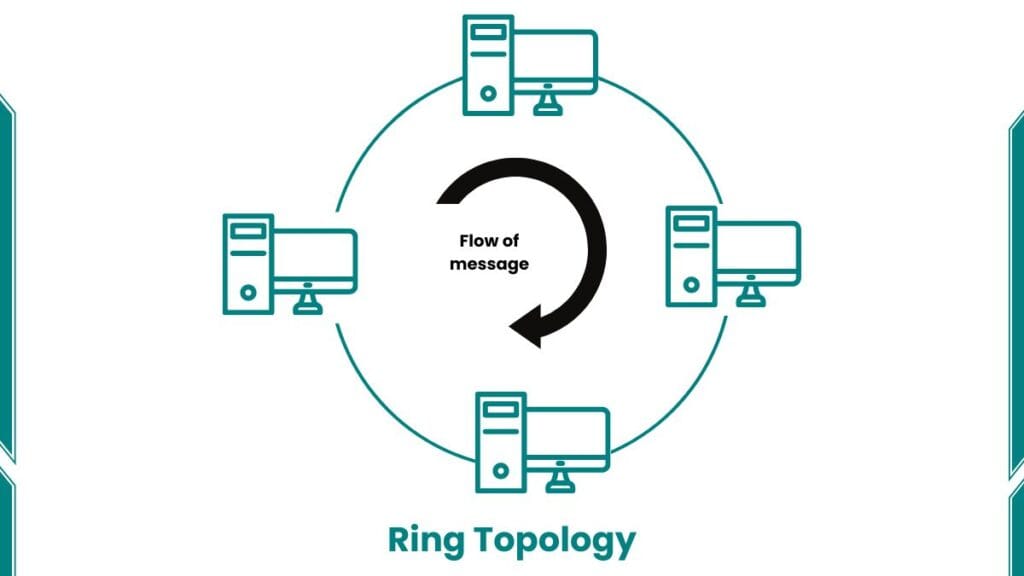Star topology centers around a central hub connecting all nodes. It offers easy management and scalability but is vulnerable to hub failure. Ring topology forms a closed loop with data circulating among nodes. It provides fault tolerance but is complex to manage and expand.
What is Star Topology?
Star topology is also known as star network. It is a client-server connection model. This configuration connects All nodes to a central controller called a hub. Each node communicates with others through this central hub. The following image shows how to start topology connect and work:

What is Ring Topology?
Ring topology is also known as ring network. It operates on a peer-to-peer connection model. In this setup, nodes are connected in a circular formation. Data travels around the ring in one direction, passing through each node until it reaches its destination. The following image shows how to start topology connect and work:

Star and Ring Topology Difference
This table helps you to understand the difference between star and ring topology easily:
| Features | Ring Topology | Bus Topology |
| Connection of nodes | Nodes are connected in the form of a ring or loop | Nodes are connected to a single cable called the bus |
| Expansion and flexibility | Difficult to add new nodes or modify existing ones; low flexibility | Relatively easy to add new nodes or modify existing ones; moderate flexibility |
| Communication delay | Increases with the addition of new nodes | Not significantly affected by adding new nodes |
| Node failure impact | Failure of one link can disrupt the entire network | Failure of one node doesn’t affect the whole network, but main cable failure disrupts everything |
| Response time | Relatively good | Can be slower, especially in networks with heavy traffic |
| Data transfer direction | Either clockwise or anticlockwise | Both directions to all nodes |
| Fault identification | Easier to locate problems with devices and cable | It can be challenging, especially for cable faults |
| Access rate | Low | Moderate |
| Cabling cost | High (n cables for n nodes) | Low (only one main cable needed) |
| Data collision chances | Very low | High, especially in larger networks |
| Signal transmission | Only in one direction | Bi-directional |
| Transmission speed | Moderate | High for small networks, decreases as the network grows |
| Complexity | More complex due to more cables | Simple in design and implementation |
| Troubleshooting | Difficult to reconfigure and troubleshoot | Easy to install, but can be difficult to troubleshoot |
| Application | Used in Wide Area Networks | Commonly used in small networks and Ethernet installations |
| Installation and maintenance | Difficult | Installation is easy, but maintenance can be challenging if the main cable fails |
